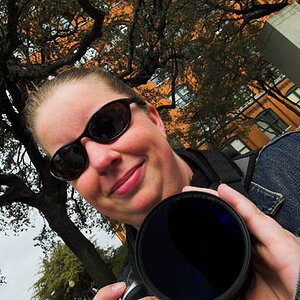- Joined
- Dec 11, 2006
- Messages
- 18,743
- Reaction score
- 8,047
- Location
- Mid-Atlantic US
- Website
- www.lewlortonphoto.com
- Can others edit my Photos
- Photos NOT OK to edit
the main reason for transitioning from 'regular' dslrs to small body mirrorless is the SMALLness and all that brings in diminishing of rotational inertia in sports or street photography or just plain portability when dslrs get heavy.
Selling the Sony A series because it links, with adapters, to any lenses is a silly idea, imo. I want lenses that match the small bodies, not weigh them down.
If the Sony A series fixes its current defects and expands its FE line to include 3 or 4 more lenses that would fit my chosen 'kit', then that's my target system.
Selling the Sony A series because it links, with adapters, to any lenses is a silly idea, imo. I want lenses that match the small bodies, not weigh them down.
If the Sony A series fixes its current defects and expands its FE line to include 3 or 4 more lenses that would fit my chosen 'kit', then that's my target system.



![[No title]](/data/xfmg/thumbnail/38/38725-bdf734721ecaad862bb3e3a856c81df5.jpg?1619738702)

![[No title]](/data/xfmg/thumbnail/32/32631-60d0db057ee085953a0921e337396654.jpg?1619735552)

![[No title]](/data/xfmg/thumbnail/32/32718-19d5f7764b6f43f6cec5a67701261560.jpg?1619735624)
![[No title]](/data/xfmg/thumbnail/32/32639-1358bee897449f9a4a38676097b475d5.jpg?1619735555)

![[No title]](/data/xfmg/thumbnail/32/32634-5acd0e44e1d927b93e8723d9184555d9.jpg?1619735554)
![[No title]](/data/xfmg/thumbnail/38/38726-c2f92932ae847f22fd6548bf87263976.jpg?1619738702)
![[No title]](/data/xfmg/thumbnail/37/37125-c083e505c2e7d8f15f717a96de782959.jpg?1619737883)
